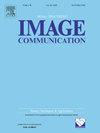HFINet:用于实时语义分割的异构尺度特征集成网络
IF 2.7
3区 工程技术
Q2 ENGINEERING, ELECTRICAL & ELECTRONIC
引用次数: 0
摘要
从语义的角度对视觉图像进行有效分割仍然是一个有待探索的研究课题。缺乏异尺度识别导致在准确划定边界方面持续存在挑战,特别是对于靠近较大物体的小而细长的物体。现有的语义分割方法在下采样时存在空间分辨率损失,下采样会平滑高频特征,模糊目标边界,导致较小目标的分割错误。为了解决这个问题,在我们的多边网络中提出了一个新的边界分支。该方法结合空间积分和通道显著性来整合异尺度特征,减少误分割,利用边界损失来增强学习过程,从而提高模型在复杂场景下的鲁棒性。此外,聚合金字塔池模块融合了来自低分辨率特征图的上下文信息,以扩大接受野,实现更高的语义标签准确性。实验结果表明,融合边界特征可以显著提高分割精度,特别是对于精确的目标边界划分。这项工作为在涉及复杂对象边界的具有挑战性的场景中增强语义分割模型的鲁棒性提供了一个有希望的方向。本文章由计算机程序翻译,如有差异,请以英文原文为准。
HFINet: Heteroscale feature integration network for real-time semantic segmentation
Effectively segmenting visual images from a semantic perspective remains an under-explored research issue. The absence of heteroscale recognition leads to persistent challenges in accurately delineating boundaries, particularly for small and slender objects next to larger ones. Existing semantic segmentation methods suffer from spatial resolution loss in downsampling, which smooths out high-frequency features and blurs object boundaries, resulting in the missegmentation of smaller objects. To address this, a novel boundary branch is proposed in our multilateral network. It incorporates spatial integration and channel significance to integrate heteroscale features, mitigating missegmentation and utilizing boundary loss to enhance the learning process, thereby improving the model’s robustness in complex scenes. Additionally, the aggregation pyramid pooling module fuses contextual information from low-resolution feature maps to enlarge the receptive field, achieving greater semantic label accuracy. Experimental results of our proposed HFINet demonstrate that integrating boundary features significantly improves segmentation accuracy, particularly for precise object boundary delineation. This work offers a promising direction for enhancing the robustness of semantic segmentation models in challenging scenarios involving complex object boundaries.
求助全文
通过发布文献求助,成功后即可免费获取论文全文。
去求助
来源期刊

Signal Processing-Image Communication
工程技术-工程:电子与电气
CiteScore
8.40
自引率
2.90%
发文量
138
审稿时长
5.2 months
期刊介绍:
Signal Processing: Image Communication is an international journal for the development of the theory and practice of image communication. Its primary objectives are the following:
To present a forum for the advancement of theory and practice of image communication.
To stimulate cross-fertilization between areas similar in nature which have traditionally been separated, for example, various aspects of visual communications and information systems.
To contribute to a rapid information exchange between the industrial and academic environments.
The editorial policy and the technical content of the journal are the responsibility of the Editor-in-Chief, the Area Editors and the Advisory Editors. The Journal is self-supporting from subscription income and contains a minimum amount of advertisements. Advertisements are subject to the prior approval of the Editor-in-Chief. The journal welcomes contributions from every country in the world.
Signal Processing: Image Communication publishes articles relating to aspects of the design, implementation and use of image communication systems. The journal features original research work, tutorial and review articles, and accounts of practical developments.
Subjects of interest include image/video coding, 3D video representations and compression, 3D graphics and animation compression, HDTV and 3DTV systems, video adaptation, video over IP, peer-to-peer video networking, interactive visual communication, multi-user video conferencing, wireless video broadcasting and communication, visual surveillance, 2D and 3D image/video quality measures, pre/post processing, video restoration and super-resolution, multi-camera video analysis, motion analysis, content-based image/video indexing and retrieval, face and gesture processing, video synthesis, 2D and 3D image/video acquisition and display technologies, architectures for image/video processing and communication.
 求助内容:
求助内容: 应助结果提醒方式:
应助结果提醒方式:


